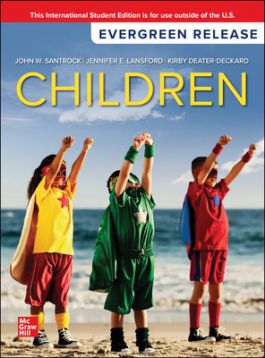Children: 2024 Release ISE
1264575173
·
9781264575176
Thousands of students across four decades have shaped the chronologically-organized content in Children. They have reported that when instructors highlight the connections among the different aspects of children’s development, they can more readily…
Leer Más
PRODUCTO DIGITAL EBOOK. NO ES UN PRODUCTO FÍSICO.
Gracias este es un libro electrónico o EBOOK, para poder utilizarlo debes de crear una cuenta en VitalSource Bookshelf esta es una Aplicación Gratis. Una vez que has creado tu cuenta, dentro de la plataforma debes de redimir los distintos códigos que hayas adquirido para poder leer tus libros.- Ingresa a tu libro desde cualquier lugar o dispositivo, con acceso a internet o sin acceso.
- Crear notas, y apuntes en tus lecturas.
- Puedes realizar búsquedas a los conceptos que necesites de manera rápida y fácil.
- Ingresa a tu libro desde cualquier lugar o dispositivo, con acceso a internet o sin acceso.
- Crear notas, y apuntes en tus lecturas.
- Puedes realizar búsquedas a los conceptos que necesites de manera rápida y fácil.
Section 1: The Nature of Children's Development
1 Introduction
Appendix: Careers in Children's Development
Section 2: Beginnings
2 Biological Beginnings
3 Prenatal Development
4 Birth
Section 3: Infancy
5 Physical Development in Infancy
6 Cognitive Development in Infancy
7 Socioemotional Development in Infancy
Section 4: Early Childhood
8 Physical Development in Early Childhood
9 Cognitive Development in Early Childhood
10 Socioemotional Development in Early Childhood
Section 5: Middle and Late Childhood
11 Physical Development in Middle and Late Childhood
12 Cognitive Development in Middle and Late Childhood
13 Socioemotional Development in Middle and Late Childhood
Section 6: Adolescence
14 Physical and Cognitive Development in Adolescence
15 Cognitive Development in Adolescence
16 Socioemotional Development in Adolescence
Available in Connect
McGraw Hill Education Psychology APA Documentation Style Guide
1 Introduction
Appendix: Careers in Children's Development
Section 2: Beginnings
2 Biological Beginnings
3 Prenatal Development
4 Birth
Section 3: Infancy
5 Physical Development in Infancy
6 Cognitive Development in Infancy
7 Socioemotional Development in Infancy
Section 4: Early Childhood
8 Physical Development in Early Childhood
9 Cognitive Development in Early Childhood
10 Socioemotional Development in Early Childhood
Section 5: Middle and Late Childhood
11 Physical Development in Middle and Late Childhood
12 Cognitive Development in Middle and Late Childhood
13 Socioemotional Development in Middle and Late Childhood
Section 6: Adolescence
14 Physical and Cognitive Development in Adolescence
15 Cognitive Development in Adolescence
16 Socioemotional Development in Adolescence
Available in Connect
McGraw Hill Education Psychology APA Documentation Style Guide
Thousands of students across four decades have shaped the chronologically-organized content in Children. They have reported that when instructors highlight the connections among the different aspects of children’s development, they can more readily understand the concepts, theories, and research. As a result, Children has focused on providing a systematic, integrative approach that helps students make these connections in their learning and practice. This release continues that philosophy by:
1. Connecting with today’s students to help them learn about children’s development more effectively;
2. Connecting with research to provide students with the most recent scholarship;
3. Connecting development processes to guide students in comparing processes across ages and stages;
4. Connecting development to real life to help students understand ways to apply content to improve children’s lives, and to motivate them to think deeply about their own personal journey through life.
1. Connecting with today’s students to help them learn about children’s development more effectively;
2. Connecting with research to provide students with the most recent scholarship;
3. Connecting development processes to guide students in comparing processes across ages and stages;
4. Connecting development to real life to help students understand ways to apply content to improve children’s lives, and to motivate them to think deeply about their own personal journey through life.

